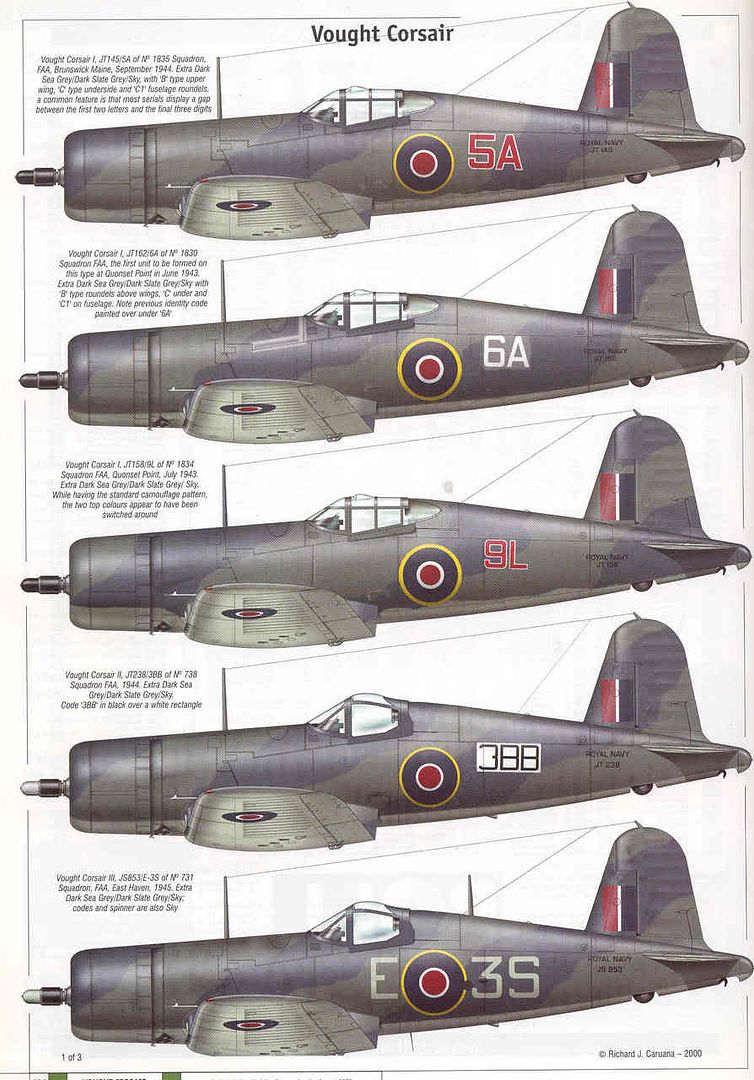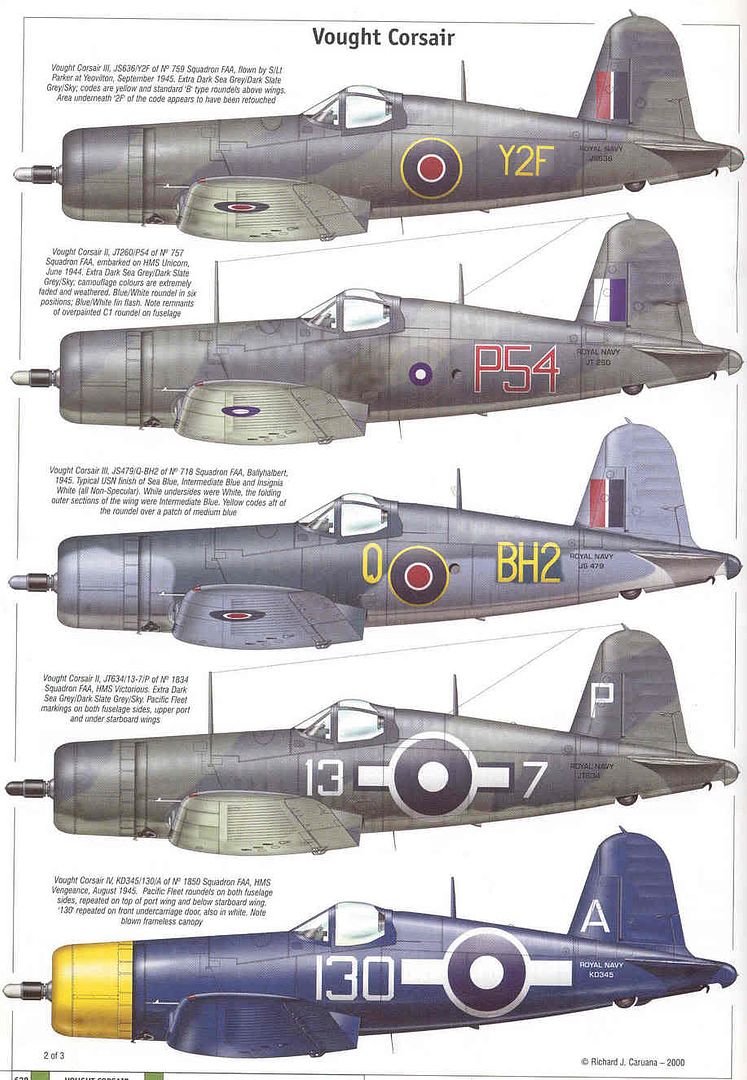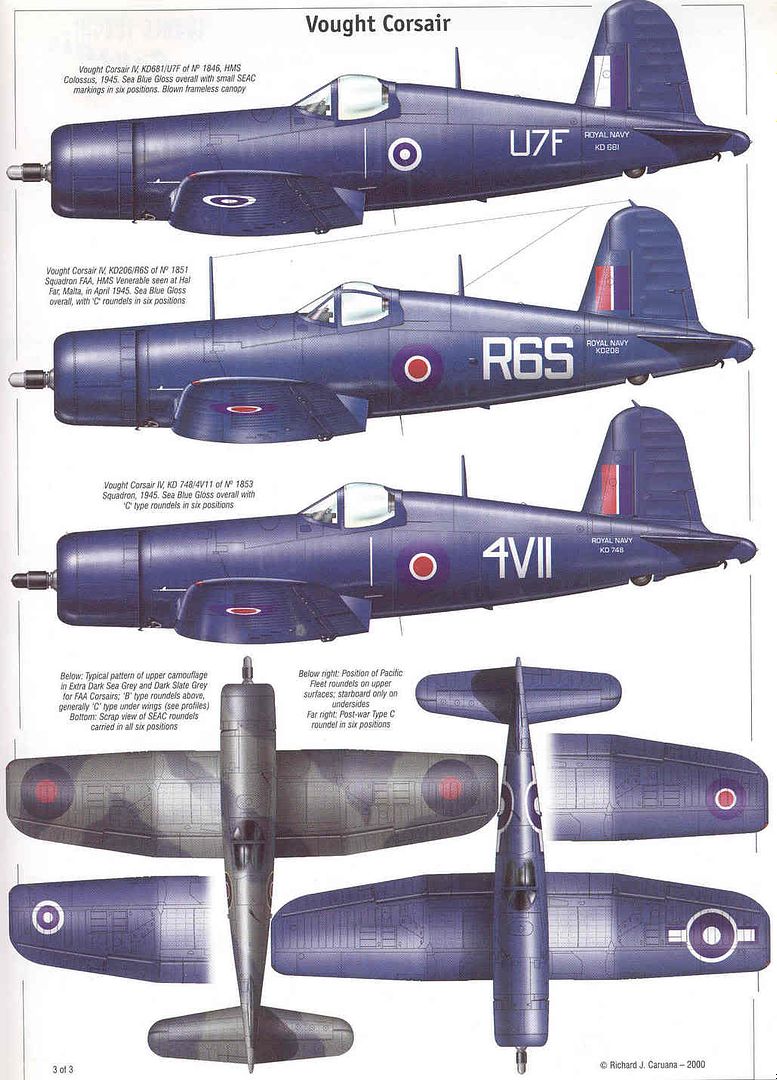The Corsair is one of my favorites. And seeing that there is a turn of developers towards WWII, I am reposting these here, as the last time I posted them here they were too small and one could not read the captions.
The Vought F4U Corsair was not only used successfully by the FAA, but it was also made carrier-capable by that service, which ironed out all its teething problems and found the solutions which made the aircraft fit for carrier operations and restored lost faith in it. The U.S. Navy used its Corsairs only after the FAA had spent time, energy, and money and a few young lives as well developing it for carrier operations. It served with disntiction in WWII, Korea, and Indochina with the French, and I believe in the Algerian war with the French. Examples of it were still serving in 1964 in some countries.
The Corsair had "the qualities of its faults, and the faults of its qualities"--and was at first feared by its pilots. Ira Kepford's book makes that clear, and I would advise all of you to read it. Ira's men made many minor modifications in the field, some of which were later officially sanctioned and introduced at the the Vought works.
These profiles are courtesy of Scale Aviation Modelller International magazine, August 2000 issue, and made by Richard J. Caruana, as usual. With all due acknowledgments.
It is sad to relate that after the War ended, many of these were pushed off the deck of an auxiliary Royal Navy carrier which had collected them from various ships and places into the deep blue near Australia--I have photos of that event.



However, Caruana often makes mistakes in his profiles, a famous case being his profiles of the P-47 where he showed the guns sticking out the same length from the leading edge, when in reality they were all different lengths-- a mistake which is inexcusable nowadays.
What I like here is that the colors are close to reality, though the artist has included the "scale effect" and has made them lighter than they would be a close-up.
The shades and hues of the FAA are often gotten wrong by modellers and skinners alike, in all sims, and in all kinds of plastic models. Many years back, perhaps 1982, I got the no.1 top award with a 1/72nd Matchbox Buccaneer in the "72nd class aircraft category" in the Greek National IPMS Championships, but my plane was painted a wrong greenish shade of extra dark sea grey overall, produced by Humbrol at the time as "authentic" color then, though it had a green hue to it which was miles from the truth. The "expert" competition "judges" did not have a clue either--the exact shade was eventually revealed when FS595a specs became common as a guidebook for modellers and artists alike, after 1983 and the magazines hosted tons of correspondence by modellers seeking the right shade. That was the time we all went to great lengths to buy that FS595a book and its addenda pages and use it as our bible later.
And such ignorance on these hues still exists--see many of the repaints of FAA a/c we have for all the MS sims as an example--as about 50% of them, if not more, are skinned in the wrong shades.
Cheers

(I was referring to the bluish dark gray as extra dark sea grey. The greenish color is known as DARK SLATE GREY , and it actually a green. That is a name for it in the official British Standards and Methuen specs used by the UK Services. The EXTRA DARK SEA GREY is FS 38118 in the US Federal Speces FS595a, and it is the darker color which is blue-grey on the camo aircraft--the other, looking green, is the dark slate grey--a name which leads to confusion usually until one learns the lesson by heart.)